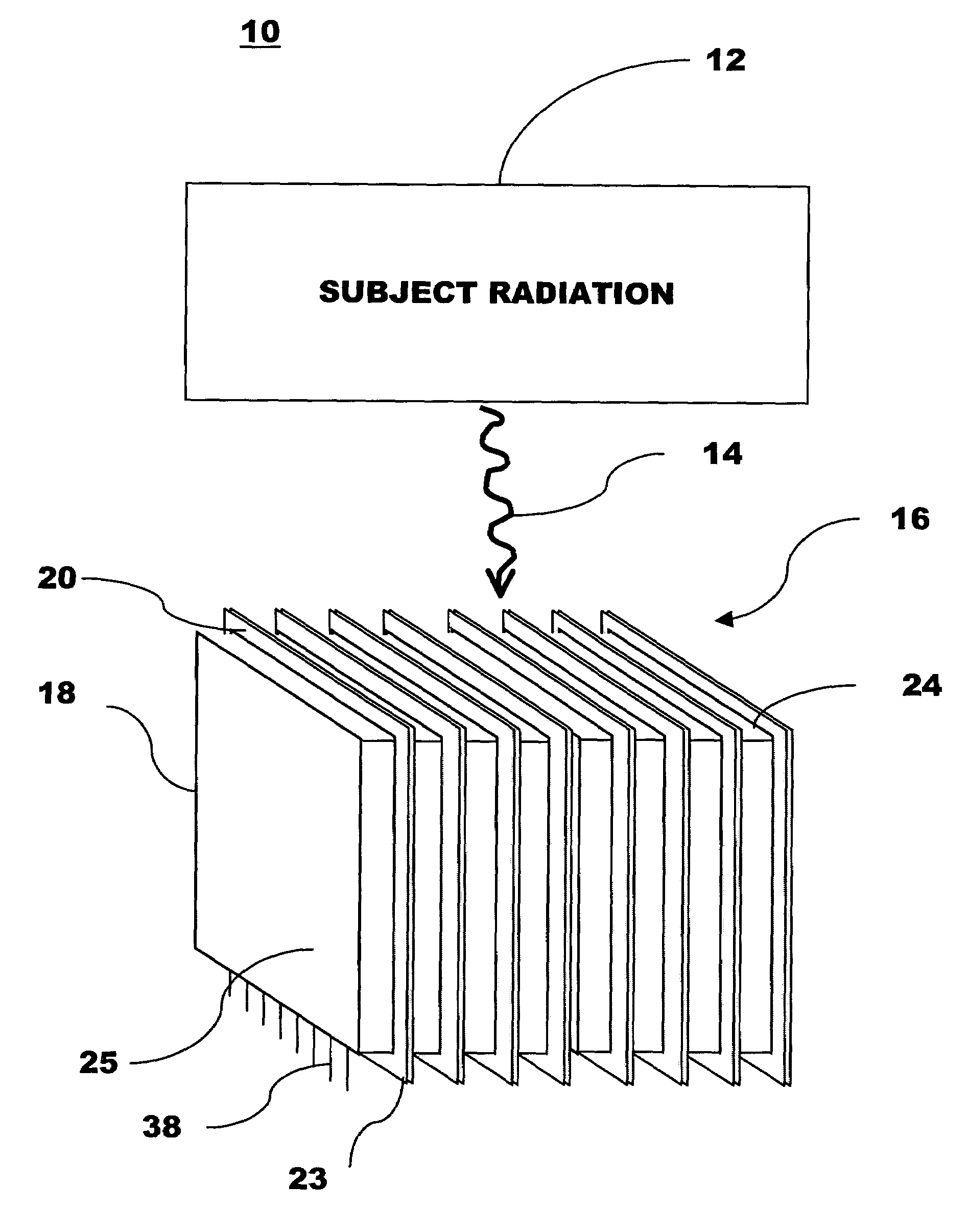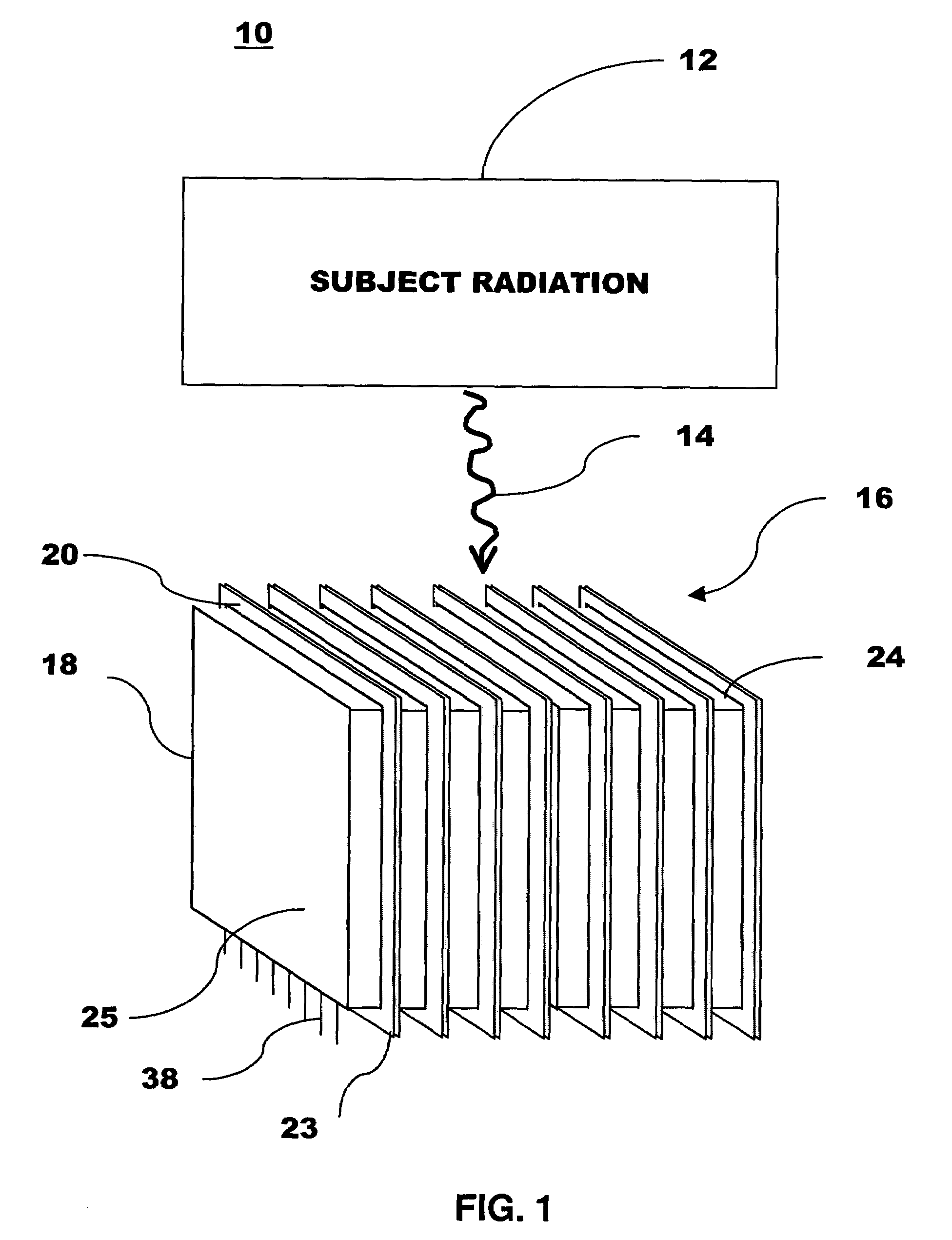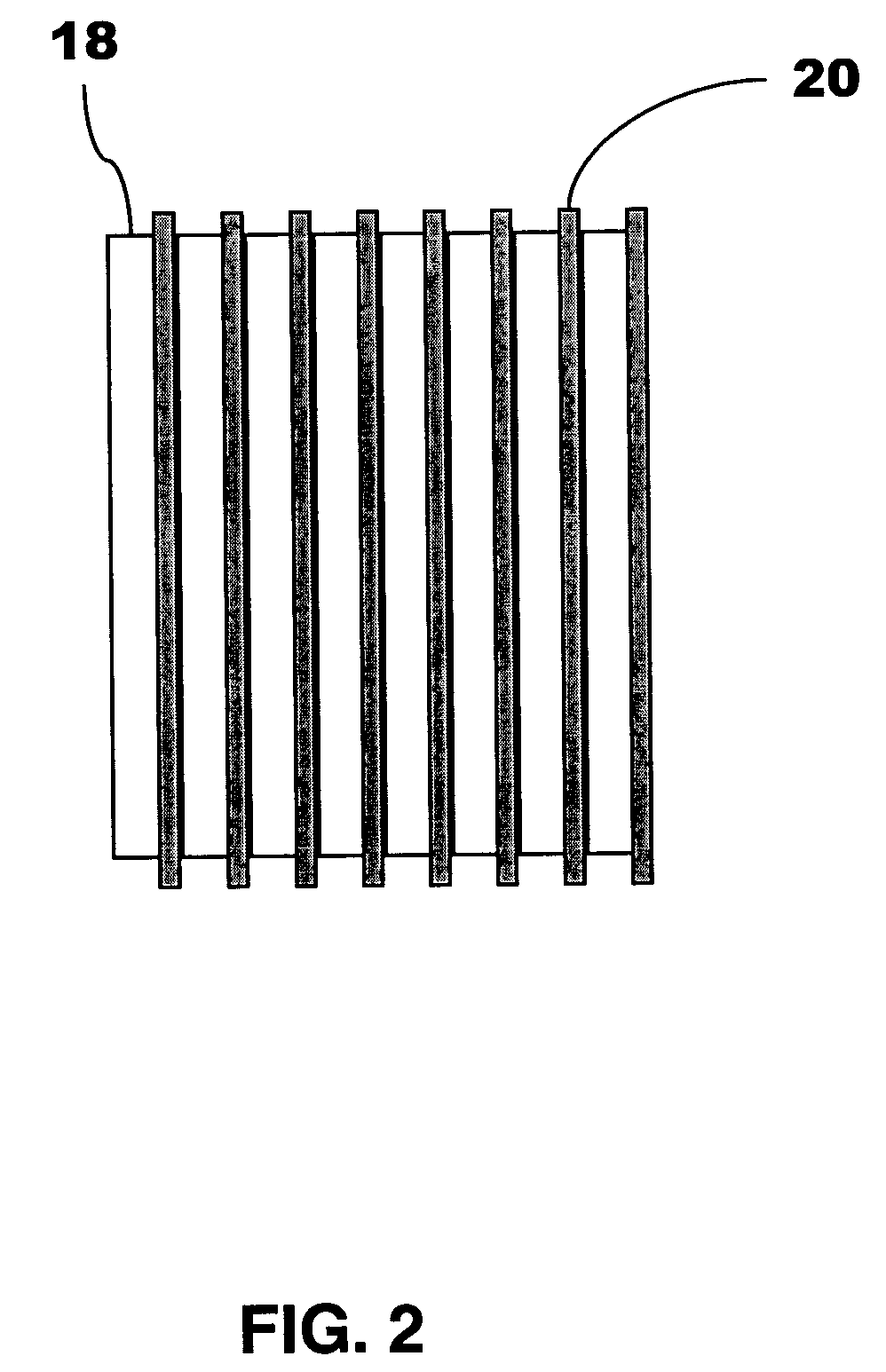Scintillation crystal detection arrays for radiation imaging devices
a technology of radiation imaging and scintillation crystals, applied in the field of high-resolution radiation imaging, can solve the problems of small fraction of scintillation light produced in the crystal to reach the photodetector, affecting the detection sensitivity of conventional discrete crystal designs, and worsening of light loss problems associated with standard photodetector readout at the end of the scintillating crystal
- Summary
- Abstract
- Description
- Claims
- Application Information
AI Technical Summary
Benefits of technology
Problems solved by technology
Method used
Image
Examples
Embodiment Construction
[0025]The invention relates to scintillation crystal arrays and imaging devices using scintillation crystal arrays. A scintillation crystal array of the invention increases light collection, can obtain near complete light collection, and improves detection, count efficiency, spatial resolution, and analysis of penetrating radioactive emissions. A preferred application of the invention is Positron Emission Tomography (PET).
[0026]A preferred embodiment of the invention includes an array of scintillation crystal sheets arranged in a device such that radiation is incident upon small end faces of the sheets. Semiconductor photodiodes read light from large faces of crystal sheets. The semiconductor photodiodes may be pixellated, meaning that the semiconductor photodiodes provide both detection of photons generated in the scintillation crystals and positional information about a detection, or may be one large pixel with positioning capability within that pixel In another preferred embodime...
PUM
 Login to View More
Login to View More Abstract
Description
Claims
Application Information
 Login to View More
Login to View More - R&D
- Intellectual Property
- Life Sciences
- Materials
- Tech Scout
- Unparalleled Data Quality
- Higher Quality Content
- 60% Fewer Hallucinations
Browse by: Latest US Patents, China's latest patents, Technical Efficacy Thesaurus, Application Domain, Technology Topic, Popular Technical Reports.
© 2025 PatSnap. All rights reserved.Legal|Privacy policy|Modern Slavery Act Transparency Statement|Sitemap|About US| Contact US: help@patsnap.com



